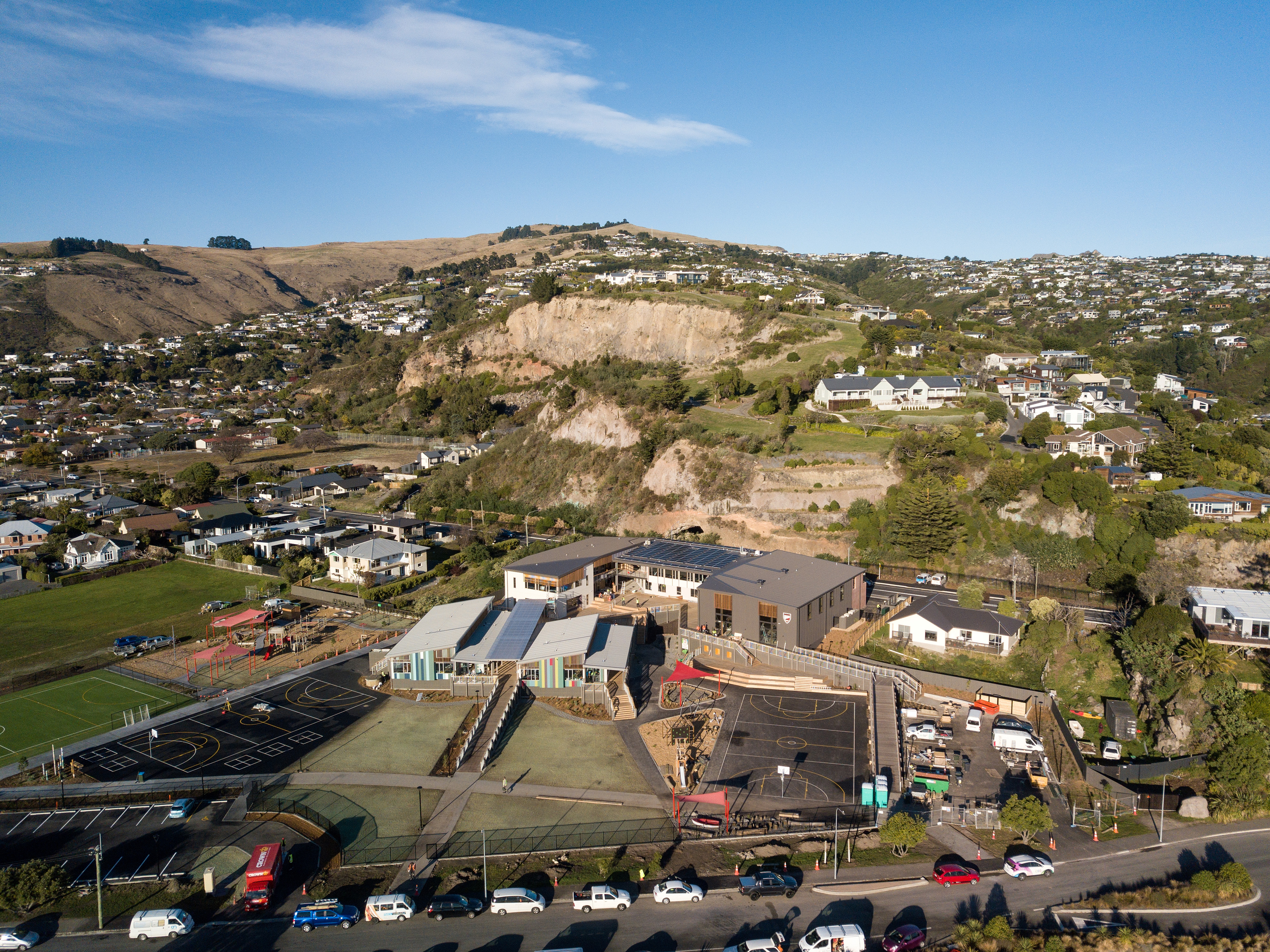The New Zealand Schools PPP programme was a series of public–private partnership contracts for the delivery of new schools across the country. The PPP model is still relatively new in New Zealand, making these projects a significant step in applying private sector finance, delivery, and long-term maintenance to public education infrastructure.
PPP1 involved the design, build, finance, and maintenance of two schools at Hobsonville Point in West Auckland: a primary school for 690 pupils and a secondary school for 1,500 pupils, including associated sports fields. This was New Zealand’s first PPP for schools.
PPP2 expanded the model with a large programme delivering four schools: Ormiston Junior College in Auckland, Aranui Community Campus and Rolleston College in Canterbury, and Wakatipu High School in Queenstown. The first three schools opened in 2017, with Wakatipu High School completed in 2018.
PPP3 continued the programme with five new schools in Auckland, Hamilton, and Christchurch. The project was completed in 2019 and covered design, construction, and 25-year maintenance under a PPP contract between the Ministry of Education and the ShapEd consortium.
Services provided
WT provided Financiers Certifier services:
- Financiers’ Certifier role across all three PPP projects
- Due diligence and reporting to funders and Special Purpose Vehicles (SPVs)
- Monitoring programme and costs on behalf of funders and SPVs
- Certification of drawdowns and progress claims
- Negotiation and assessment of project variations
- Independent cost and risk advice throughout delivery
Challenges
The PPP schools were spread across multiple regions – Auckland, Canterbury, Hamilton, and Queenstown — which created logistical and coordination challenges. Each site had its own delivery programme, contractor team, and regional considerations, but all were required to meet the same standards under the PPP contract. WT used its national office network to provide on-the-ground knowledge in each location, while maintaining central oversight to ensure that reporting and certification were consistent across every project.
The PPP model itself also introduced a new layer of complexity. These projects brought together a wide range of stakeholders, including the Ministry of Education, funders, Special Purpose Vehicles, contractors, architects, and facilities management providers. Each party had different drivers – from educational outcomes to long-term asset performance to financial return – and aligning these required clear communication and structured processes.
WT’s role as Financiers’ Certifier was to remain independent and transparent, giving funders confidence in both the delivery and financial reporting. At the same time, we needed to be practical: working with contractors and facilities managers to find workable solutions to programme and cost pressures without compromising the certainty that the financiers required. Balancing these perspectives was critical to keeping the projects moving and ensuring they remained commercially sound.
Successes and value added
WT brought extensive experience from acting for funders on other major New Zealand projects and PPP assignments across the global WT network. This gave us tested methods for certification, reporting, and variation management, which could be adapted to fit the specific requirements of the programme. Funders and government stakeholders benefited from clear, reliable information that supported decision-making and reduced uncertainty.
Beyond the technical role, the projects demonstrated the value of the PPP model itself. The schools delivered under PPP1, PPP2, and PPP3 provided modern, purpose-built facilities in Auckland, Christchurch, Hamilton, and Queenstown, which are places where demand for new education infrastructure was particularly strong. For the Ministry of Education, these projects set a new benchmark for large-scale school delivery and long-term asset management.
By combining local knowledge with global expertise, WT helped ensure that the PPP model could be successfully applied in New Zealand, giving confidence to funders and ultimately supporting the development of the school network for students nationwide.
Project lead:





